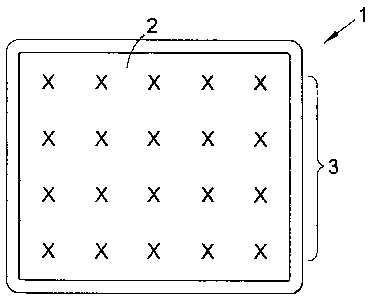Note: Descriptions are shown in the official language in which they were submitted.
CA 02653133 2009-02-06
1
M&C Folio: CAP98941 Document : 1395784
A TOUCH SCREEN DISPLAY APPARATUS AND SYSTEM AND METHOD FOR
SAME
The invention relates to a touch screen display apparatus, and system and
method for
same.
Touch screens are increasingly used in computer systems, as they are
relatively quick
and easy to use. However, they can be the source of infection and cross-
infection when
a number of users touch the same touch screen of say a PC. This is
particularly so in
hospitals, where it is essential that the screen is wiped between users with
an approved
cleanser such as alcohol or other approved fluids.
This is to reduce the risk of cross-infection from C-Difficile, MRSA and other
hospital
bound infections.
Unfortunately, it is not always the case that the screen is wiped between
uses, by
different users, so increasing the risk of cross-infection.
It is an object of the invention to seek to mitigate this disadvantage.
According to a first aspect, the invention provides a touch screen display
apparatus,
comprising a screen and sensor means sensitive to motion in a direction across
the
screen by wiper means, whereby to determine that a desired area of the screen
has been
contacted by the wiper means and wiped thereby.
According to a second aspect, the invention provides a system for mitigating
cross-
infection when using a touch screen display apparatus, comprising a main
computer
adapted to control a display on the screen, a user identification code for log-
on to the
CA 02653133 2009-02-06
2
system, means to instruct wiping of the screen after log-on, and means to
cancel log-on
if the screen is not wiped.
According to a third aspect, the invention provides a method for use of a
touch sensitive
display apparatus, comprising providing a computer system including a touch
screen,
including the steps of providing for log-on using a user identification code,
providing an
instruction for wiping the screen, and providing for cancellation of log-on if
the screen
is not wiped.
Using the invention it is possible to ensure that the screen is wiped between
uses, and
that users are not able to learn the location of the location and number of
the sensor
means or wipe detection points.
A touch screen display apparatus is schematically illustrated in front
elevation in the
accompanying drawing.
Referring to the drawing there is shown a touch screen apparatus 1, having a
screen 2
which is adapted to be touched by one or more users to operate a computer
system
according to command steps which appear on the screen for displaying
information
thereon. There is sensor means 3 in the form of an array of sensor elements or
touch
points, which are each indicated by a`X' in the Figure but which are not
normally
visible to a user. However, they are able to detect when a wiping element is
wiped
across an area of the screen 2, which it is desired to clean, usually but not
always the
whole surface area. The number, position and disposition of the touch points
`X' is
controlled by computer software, which is able to vary the number, location
and
distribution of the points so that a user is not able to learn the
characteristics of a
particular array 3. This ensures that a complete wiping action is effected
between uses
of the screen.
Thus in use in a hospital, the screen 2 may be used to by staff to access
patient medical
records held in a data base or other hospital computer systems, or by patients
for
entertainment and communications. Access thereto is via the touch screen,
usually
positioned at workstations, on portable wireless devices or at a patient's bed-
side.
CA 02653133 2009-02-06
------------
3
Each user is required to log-on to the hospital's computer system. This
usually
comprises, for security, a two-step process, using identification means,
usually any two
of say user naine, password, PIN, smart card, Bluetooth or radio frequency ID
tags, or
biometric readers such as fingerprint readers.
After the first step, the screen 2 has to be wiped for hygiene purposes,
otherwise the
user cannot proceed to the next step. Software puts up the instruction to wipe
the
screen, and then allocates the array 3 on the area of the screen 2 which must
be wiped
within an allocated or pre-determined time. The act of wiping, usually with
alcohol or
some other cleaning fluid, is detected by the touch points X. If all are wiped
within the
predetermined time, the user is able to proceed to the next step of the log-in
process. If
not all are wiped within the allocated time, the user is prompted to repeat
the wiping
process. After a plurality, in the embodiment two, of failed complete wipings,
the user
must repeat the first step of the log-on process. The cleaning fluid is
suitably
impregnated on a hand-held cloth, for ease of use.
It will be understood that the number and distribution of the touch points `X'
can be
changed for each user using the software, there being a number of pre-set
patterns or
arrays so that each user wipes the whole of the area of the screen 2 to be
wiped and so
that users are not able to learn the number and distribution of the touch
points.
